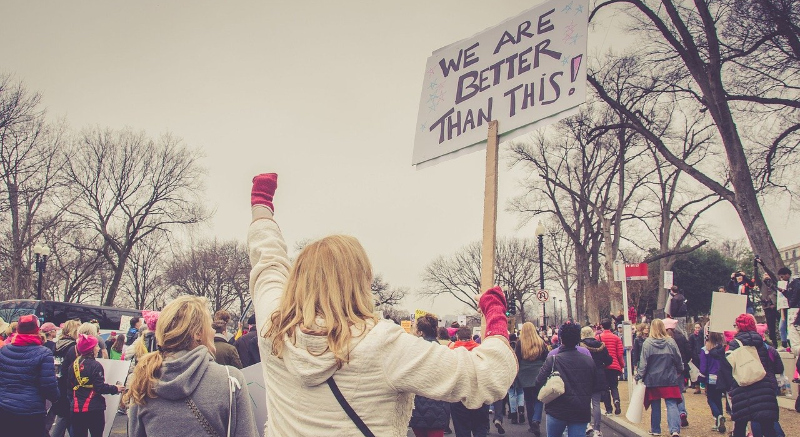Why has Seattle once again jumped to the head of the class in protest politics? Where have all those marchers come from? Good questions, and for some answers I turned to two U.W. historians.
One is the labor historian James Gregory, who argues that Seattle has had a series of iconic radical moments that go viral, impress many other like-minded lefties, and induce them to move to our city. Those iconic moments are powerful, with good visuals that last for days and make a lasting impression.
There was the General Strike of 1919. There were the WTO rampages of 1999. There was the 2013 election of a socialist to the city council, leading the masses with her anti-capitalist quotes. And now the Black Lives Matter occupation of a few blocks on Capitol Hill, the apple of the national media’s eye and another story with legs.
Prof. Gregory has put this theory into a speech I attended and an article in the Spring 2016 edition of Pacific Northwest Quarterly. He writes:
“My theory turns on three elements–events, stories, migration—all operating together to keep the left alive in this place and to keep this city’s left-leaning reputation alive. The stories circulate and some people move here because of the radical reputation, in doing so they help make the reputation real….
“Eighty years after the general strike, Seattle had another reputation-building event that would convince people around the world, especially radicals, that there was something special about the political culture of this city…
“Certain initiatives and events have been turned into powerful stories that circulate and persuade certain people that Seattle is a place that nurtures radical activism. Reputations are a dynamic force, they have a way of fueling history.”
The other U.W. historian is John Findlay, who specializes in the Pacific Northwest. He adds the following radical aspects in our history:
In 1885-1915, the state’s formative period, “Washington attracted a prodigious share of radicals, socialists, and utopians,” coming here because we were a state that welcomed radical change. The I.W.W. flourished here, thanks to the lumber and mining camps. Our constitution was written in 1889 at a time of Populism with its hatred of railroad and other trusts.
There was a second period of radicalism in the 1930s, when communism seemed a plausible alternative to the collapse of capitalism. This period produced the famous observation of James Farley about 47 states “and the soviet of Washington.”
Additionally, the state (unlike Oregon) has always encouraged the growth of population, including the ideologically selective migration of earlier booms.
Notably, these radical inundations have also touched off counter-reactions. Seattle Mayor Ole Hanson survived an assassination attempt (the bomb didn’t detonate) and rode a post-war red scare in 1919 into national prominence. “The anarchists in this community shall not rule its affairs,” Mayor Hanson boasted, Trump-like. Speaking of bombs, Seattle has had a moderate share of terrorist incidents.
We had another bout of sniffing out communist sympathizers in the 1940s and early ’50s, with homegrown Albert Canwell tormenting university professors, corresponding to the rise of Joe McCarthy.
I would add one other factor: the hunger of the national media for Wild West stories about outsized characters, epic battles, and menacing trends from the Left Coast — well before FOX News. The Far West breeds nightmares. They have been hard to take your eyes off them and strangely alluring.
Welcome to the next chapter in this televised series!
Discover more from Post Alley
Subscribe to get the latest posts sent to your email.


A few more things that have left Seattle with a world-spanning rep for life on the cutting edge:
— the 1968 Labor Da weekend Sky River Rock Festival: the first do-it-yourself no-promoter-necessary event of its kind in the world, and one which sent performers and attendees alike home with the message that Seattle, Snohomish County and the State of Washington were the new Ground Zero of Hip;
–the May 1970 freeway march in protest of the clandestine and illegal bombings of Cambodia, which set off copy-cat events across America;
–the widely publicized 1971 federal prosecution of “the Seattle Seven” for inciting to riot, and the subsequent Coen Brother’s film The Big Lebowski, which turned the slobby but oddly endearing Jeff Dowd into “the Dude” who abides in pop culture too this day;
–the “Seattle Sound,” aka Grunge, which emerged in the mid-1980s to dominate white pop music for a decade, while establishing the thrift-shop plaid and denim look essential to one version of disaffected international yout to this very day;
–and of course the 1999 WTO “riots,” which introduced a trans
fixed global audience to the latest in mass-movement tactics and couture, and marked the return of Anarchist leather and black as a bankable behavioral brand. We wouldn’t have “antifa” to kick around today if Seattle hadn’t helped to provide the iconography.